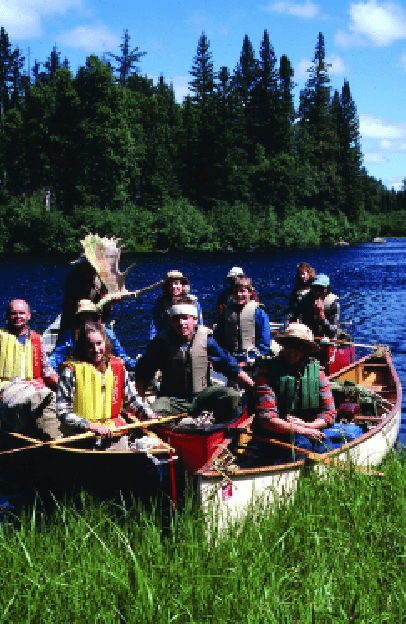By Cliff Jacobson, Wilderness Guide & Outdoor Writer
Last year, I presented a program for the Minnesota Canoe Association. About 150 people attended. With the exception of six teenage girls—who were there to show slides of their trip in the Boundary Waters—everyone (including me) had gray hair. Murmurs of “look at all the gray beards” bounced around the room.
Gray is now largely the hair color of those who enjoy the Boundary Waters Canoe Area each summer. When, in 1968, at the age of 28, I made my first trip into this region, most of the paddlers were not much older than me. Now, the average age is close to fifty. Where have all the young people gone?

To technology, mostly. Today’s kids would rather play on their computer than go outside. Few have ever gone canoeing, fewer still have camped out-of-sight of an RV. They have no use for wilderness. Richard Louv, addresses this concern in his book, Last Child in the Woods: Saving Our Children from Nature Deficit Disorder. Louv makes the case that kids are so consumed by TV and video games that they have lost their connection to the natural world—they see no value in wild places and therefore, no reason to preserve them. I taught eighth grade environmental science for 30 years and I can say he is right on target.
What isn’t right is society’s view that kids must be flooded with (mostly useless) information and tested frequently to ascertain their knowledge of it. The result is that teachers have no time for social or environmental concerns. They must teach to tests that are designed by those who don’t hike, camp or canoe or give a wit about wilderness. Teachers who do take their students outdoors without meeting the “approved government objective”, are asking for trouble. If it’s not in the state-approved curriculum—or more accurately, “not on the test”—it’s not acceptable. Even nature centers are not immune from regulation. Where once they could present a variety of interesting topics, they, like teachers, must now key into the “approved curriculum”.
Field trips? What are they? Or rather, what were they? Schools no longer have money for away-from-school activities. Field trips now are largely self-funded, meaning the kids—not the school—pays for the bus ride. Admittedly, a few (very few) teachers defy the odds and meticulously collect bus fare—usually two to five dollars per head. Some kids pay, some don’t. Caring administrators often look the other way. Ultimately, teachers tire of the extra work and the field trips just go away.
When I taught environmental science at Hastings Middle School (I retired in 2001), I offered free after school canoe trips on the nearby Mississippi River. We went twice a week when the weather was good, and always had a full house. But now, with today’s ludicrous demands on teachers, I’d have no time for it.
When snow covered the ground I took each of my classes on a half-day snowshoe hike. The kids would ask: “Mr. J, what do we have to write down?”
“Nothing!”
“But what do we have to know for the test?”
“Won’t be on a test!”
“Yeah, great, but then, why we goin’?”
“Just for fun and to learn to love wild places. Is that okay?”
“Yeah, man, way cool!”
Get the point? Too bad our politicians don’t.
The result is that we’re raising a generation of youngsters who love malls more than trees. And unless we change our educational expectations, and quickly, I fear that we will continue to lose more wilderness and more of our sanity.
This article first appeared in Wilderness News Spring 2012

